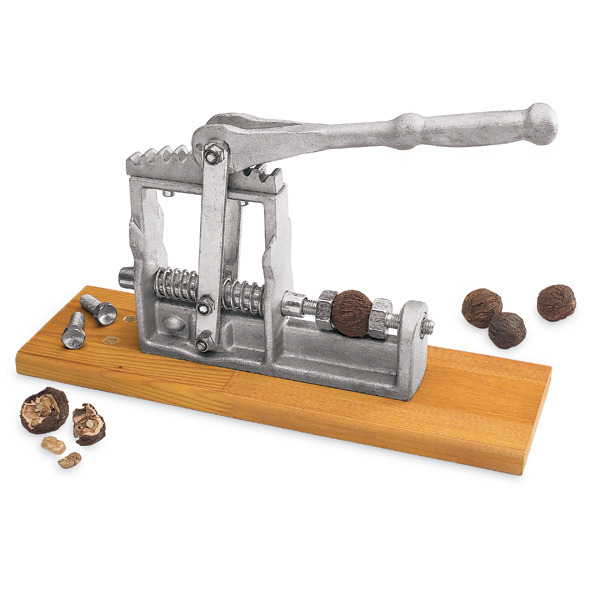
 |
|
#16
|
|||
|
|||
|
I have an archtop made of butternut. I'll be honest. It's not that impressive acoustically. It sounds rather thin and not much volume. The top is quite thin... about 1/8". I might consider it for back and sides, but not for top wood.
As far as hardness, it's not soft like spruce or basswood. It seems about the hardness of poplar or alder. |
|
#17
|
|||
|
|||
|
The butternut dulcimer I played was all butternut - sides, back, scroll (peghead) and top. Most traditional mountain dulcimers, particularly those with scroll headstocks and wooden friction pegs, are typically made out of a single species of wood, most often all-walnut where I’m from in Missouri.
Since I was lucky enough to get my first dulcimer built by a builder who insisted on using spruce tops, that’s been my preference ever since. But that butternut dulcimer I played was the sweetest-sounding one wood dulcimer I’ve ever played. As John mentioned about the butternut guitar he built, that dulcimer was notable for how very lightweight it was - after its magnificent tone that was the second most noticeable thing about the instrument. whm |
|
#18
|
|||
|
|||
|
Oh but Butternut is indeed a hardwood, by definition. It is closely related to Walnut. On the other hand it is not a particularly hard hardwood. I hope that'a what you meant.
__________________
The Bard Rocks Fay OM Sinker Redwood/Tiger Myrtle Sexauer L00 Adk/Magnolia For Sale Hatcher Jumbo Bearclaw/"Bacon" Padauk Goodall Jumbo POC/flamed Mahogany Appollonio 12 POC/Myrtle MJ Franks Resonator, all Australian Blackwood Goodman J45 Lutz/fiddleback Mahogany Blackbird "Lucky 13" - carbon fiber '31 National Duolian + many other stringed instruments. |
|
#19
|
|||
|
|||
|
I'm not a luthier but have been a woodworker for 25 years or so. I've used butternut at times but only for decorative effect (e.g. cabinet door panels) not structural members. I considered it a "white walnut" but alway felt that is lacked the crispness of other species when worked. It also has a fairly open pore structure (open pore is not the same as grain), which seems to me would work against it as a top tone wood. The more open the pore, the more "air" there is between the wood fibers, the less sound transmission.
The reason it might work well for the dulcimers cited here is that dulcimers depend upon the thick fretboard for their strength; the tone wood is not under any stress. Last edited by SkipII; 05-28-2020 at 10:40 AM. |
|
#20
|
|||
|
|||
|
Quote:
https://www.wood-database.com/butternut/ , https://www.wood-database.com/sitka-spruce/. But yes butternut is an angiosperm and a dicot. Also The seeds are inside a nut so botanically it is a hardwood. |
|
#21
|
|||
|
|||
|
I made one dulcimer entirely out of butternut many years ago. The wood came from a tree that was standing dead in my yard when I bought the house, and I was able to get quartered stock wide enough. It sure was light. It could well make a good top if you could find some wide enough.
I use it as a substitute for cedro ('Spanish cedar') in necks when I make 'domestic wood' classical guitars. One of my students came up with some that was wide enough, and we used it to make B&S on a Flamenco. It worked OK, but lacked the 'crispness' of sound of a cypress instrument. The sides were very hard to bend without getting crushes at the waist. A couple of years ago I was given an old fiddle that has a one-piece flat cut butternut back. Sadly, it's beyond repair, and impossible to identify. The Museum of Fine Arts in Boston has a couple like it in their collection, but they haven't been able to identify them either. I'm pretty sure it dates to pre-1800. Butternut wood is sadly pretty available these days. A blight is killing off the trees, and there's a lot of salvage logging going on. Some of the wood I've gotten in the recent past was buggy. We had trees in the back yard when I was a kid, and collected the nuts; hard to crack but worth the effort. I'm unlikely to get any more. 
|
|
#22
|
|||
|
|||
|
Quote:
Quote:
 The nuts are a stronger, lemony flavour than typical "Persian" walnuts. I can't remember much about the taste of Claro walnuts - they don't grow here - but my sister had one in her backyard in California. The shells of black walnuts are very hard and powdered shells are used in de-burring metal gears during manufacture. The husks - green when fresh, black and slimy when not - are used dried and powdered as an herbal anti-fungal. The husks have been used as a dye for centuries: if handled with bare hands, they'll leave your fingers black for a month. Of course the wood of black walnut is prized for furniture and makes some nice guitars. Last edited by charles Tauber; 05-28-2020 at 10:25 AM. |